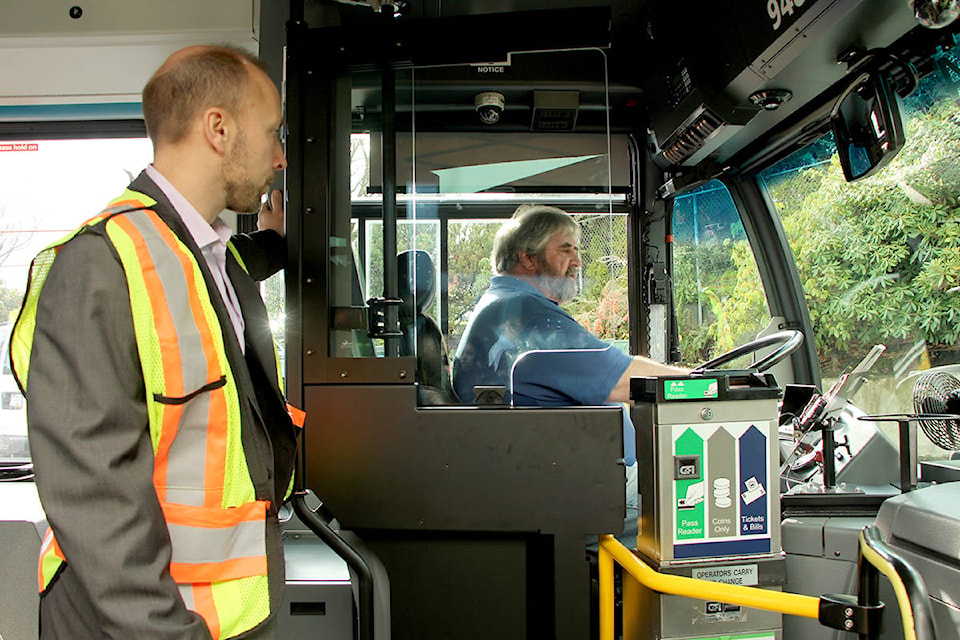A pilot project promises to slam the door on abusive behaviour towards transit operators.
The Victoria Regional Transit Commission is one of three systems where BC Transit will test new interior doors designed to protect operators against incidents of physical and verbal assault, of which local officials have recorded 19 so far.
The Canadian Urban Transit Association, of which BC Transit is a member, defines assaults as any act of aggression physical or verbal — that hinders the driver’s ability to complete his or her scheduled run safely.
SEE: Drunk passenger assaults BC Transit workers in Victoria
So what accounts for the number of incidents? Operators interact with a wide of range of individuals, some of the whom may have consumed alcohol or drugs, while others may be dealing with mental health issues, said Saanich’s Coun. Susan Brice, who chairs the Victoria Regional Transit Commission.
Disputes over fares often precede conflicts between bus operators and riders, said transit commission chair Susan Brice in pointing to fare changes designed to reduce disagreements, over who needs to pay how much.
Other factors contributing to conflict between operators and riders include the time of the day, and location, said Brice.
This said, any number of factors can contribute to conflict between riders and operators. “You can’t always anticipate what’s going to trigger somebody to be aggressive,” she said.
The doors rolled out Wednesday themselves consist out of metal at the bottom, and plexiglass at the top. They will give operators the option of opening it for easier communication with riders.
“We believe that this addition will give operators additional safety,” said At the time same, it will allow drivers to maintain personal contact with riders, she said.
Transit systems in Kelowna, and Abbotsford will also test the doors, each of which costs $6,000. A total of five buses across the three systems will have the new doors, with three of the buses serving Victoria riders. The buses will run on various routes across the Greater Victoria region, including Saanich.
The pilot project will last for six months, followed by a review, that will then determine whether the doors will appear across the fleet, a potentially expensive proposition. “You want to make sure you get it right,” said Brice.
The Victoria Regional Transit has a total fleet of 289 buses of several types, and handled 25.5 million trips in the 2016-2017 fiscal year.
The project includes several partners, including unions, WorkSafe B.C., as well as local and provincial governments. It follows a comparable pilot project featuring BC Transit and TransLink’s Coast Mountain Bus Company (CMBC) in the Lower Mainland launched between 2015 and 2016.
Lower Mainland transit operators report the barriers have prevented dangerous or unwanted exchanges with problem passengers, and their system is moving ahead with plans to introduce the doors across conventional buses, a task to be completed within two years, according to the WorkSafe Magazine.
The pilot project follows after several high profile incidents of attacks against bus operators around the province, including the stabbing of a Kelowna driver with a syringe. Closer to home, Saanich police five years ago arrested a teenager after he had spat on a bus driver.
The pilot project is only the latest program designed to improve the overall safety to transit riders and operators. Almost exactly a year ago, the local transit commission announced the installation of closed circuit television, a move that has improved safety, said Brice.
Overall, the pilot project is only the latest in a number of measures designed to improve safety. “This is an important step, but not the only safety measure that we are taking,” said Brice. Other measures have included driver training designed to diffuse situations, partnerships with first responders, and enhanced communication technology on board the bus, she said.



